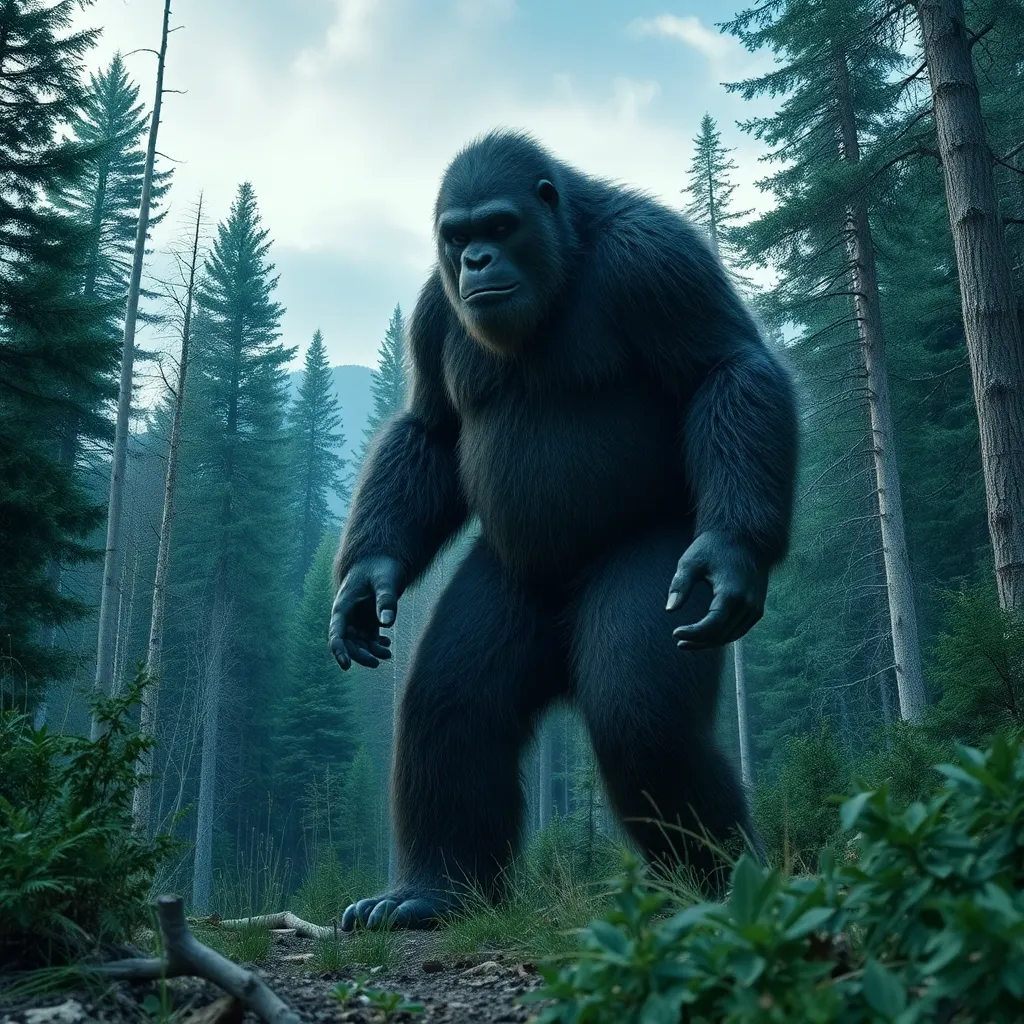Bigfoot: A Threat or a Guardian of the Wild? Analyzing the Nature of the Creature
I. Introduction
Bigfoot, often depicted as a large, hairy, ape-like creature, has long captured the imaginations of people across the globe. Rooted in folklore, this enigmatic being has become a symbol of mystery and the unexplored wilds of North America and beyond. From Native American legends to modern sightings, Bigfoot occupies a unique place in cultural consciousness.
This article seeks to explore the central question: Is Bigfoot a threat or a guardian of the wild? By examining various perspectives, myths, sightings, and scientific viewpoints, we will delve into the complexities surrounding this legendary creature.
II. The Mythology of Bigfoot
The mythology of Bigfoot is rich and varied, with historical accounts and cultural interpretations differing widely across regions. Indigenous tribes in the Pacific Northwest, for example, have their own versions of the creature, often referred to as Sasquatch, which they view as a part of their spiritual beliefs.
Over the years, Bigfoot has evolved in popular culture, transitioning from folklore to a subject of documentaries, films, and reality shows. This evolution reflects a growing fascination with the unexplained and the unknown.
The psychological appeal of the Bigfoot myth can be attributed to several factors:
- The allure of adventure and exploration.
- The desire to believe in something beyond the ordinary.
- The thrill of the unknown and the possibility of discovery.
III. Sightings and Evidence
Notable Bigfoot sightings have been reported throughout the years, with some of the most famous including the Patterson-Gimlin film from 1967 and the Skookum cast in 2000. These reports have sparked extensive investigation and debate within both the scientific community and the general public.
When analyzing evidence, several types are often presented:
- Footprints: Many claim to have found large, unexplained footprints in remote areas.
- Audio recordings: Some enthusiasts have captured what they believe to be Bigfoot vocalizations.
- Photographs: Numerous photos exist, though most are inconclusive or easily debunked.
Modern technology plays a significant role in Bigfoot investigations. Drones, trail cameras, and audio equipment have all been used to gather data that could potentially provide insight into the existence of this elusive creature.
IV. Bigfoot as a Threat to Humans
While many view Bigfoot through a lens of fascination, there is also concern regarding the potential dangers of encountering such a creature in the wild. Anecdotal accounts of aggressive encounters exist, though they are often sensationalized.
Some individuals report feeling threatened by Bigfoot, leading to a rise in fear and superstition in local communities. These feelings can have real-world implications, such as:
- Increased paranoia while hiking or camping in remote areas.
- Potential harm to wildlife, as fear may drive humans to act aggressively.
- Economic impacts on local tourism, as some may avoid areas known for Bigfoot sightings.
V. Bigfoot as a Guardian of the Wild
On the other hand, some theories posit that Bigfoot plays a role in maintaining ecological balance. This perspective suggests that Bigfoot could be a guardian of the wilderness, ensuring the health of ecosystems by controlling animal populations.
Additionally, Bigfoot serves as a symbol of wilderness preservation and the mystery of nature. For many, the belief in such a creature encourages a respect for the environment and a desire to protect it.
Indigenous perspectives often view Bigfoot as a spiritual being, a protector of the forest that embodies the values of respect, balance, and coexistence. This interpretation enriches the narrative surrounding Bigfoot, positioning it as part of a larger ecological and spiritual framework.
VI. Scientific Perspectives on Bigfoot
Despite the fervor surrounding Bigfoot, the scientific community largely remains skeptical. The search for this elusive creature raises questions regarding its biological plausibility. Some researchers argue about the lack of concrete evidence, while others explore the possibility of undiscovered species.
The importance of conservation and biodiversity is paramount in discussions about cryptids like Bigfoot. Regardless of whether Bigfoot exists, the quest to understand such creatures reflects broader concerns about wildlife preservation and the health of ecosystems.
VII. The Cultural Impact of Bigfoot
Bigfoot has permeated media, literature, and folklore, becoming a cultural icon. From documentaries to fictional portrayals, the creature continues to inspire storytelling and exploration. This cultural impact extends beyond entertainment.
In many regions, Bigfoot has influenced local economies through:
- Tourism: Many towns capitalize on Bigfoot sightings to attract visitors.
- Merchandise: T-shirts, mugs, and other souvenirs featuring Bigfoot are popular.
Moreover, Bigfoot’s presence in public discourse often intertwines with discussions about environmental ethics and conservation, highlighting the need to protect wild spaces and the creatures that inhabit them.
VIII. Conclusion
In conclusion, Bigfoot embodies a dual nature as both a potential threat and a guardian of the wild. This complexity reflects deeper human relationships with nature, reminding us of the mysteries that still exist in our world.
Myths like Bigfoot serve significant purposes in understanding our environment, shaping our perceptions, and informing our conservation efforts. As the search for Bigfoot continues, it prompts vital conversations about wildlife conservation and the importance of preserving the wilderness for future generations.




